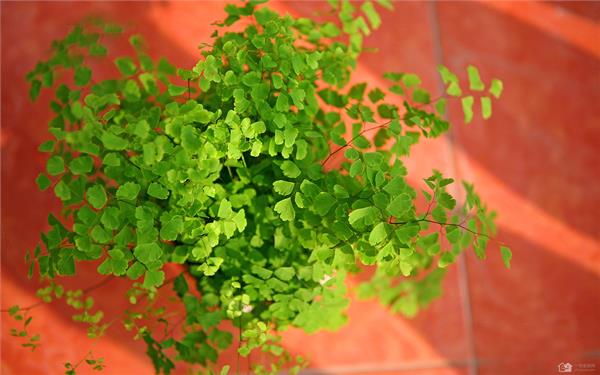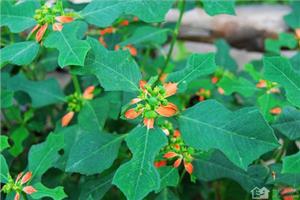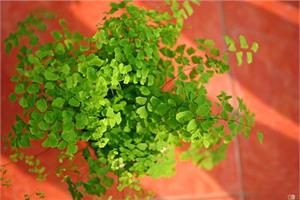Basic understanding of Dryopteris Dryopteris Culture methods of Dryopteris
Dryopteris is one of the most common and popular green plants in our country. it has beautiful stems and leaves and small plant type. it is very suitable for small potted plants to decorate household windowsills and other places, and is welcomed by many owners. Let's take a look at the introduction of how to raise Dryopteris.

First, the basic understanding of Dryopteris.
Dryopteris Dryopteris (scientific name: Adiantum capillus-veneris Linn.) is a perennial evergreen herb, also known as iron grass, young girl's hair, iron grass, water pig hairy soil. Its light green thin leaves with jet-black and shiny petioles are particularly elegant and elegant. It is 0.1m high and is 0.5 m high. It is named Dryopteris Dryopteris because of its slender stem and color like iron wire. Dryopteris is also an indicator of calcareous soil. Because of its fear of dryness and strong light, it must be placed in a place where there is no direct sunlight for maintenance. There are also many varieties of Dryopteris Dryopteris, such as Dryopteris przewalskii, Dryopteris renifolia and so on. It belongs to the species of the world and is wild in all regions.
2. Culture methods of Dryopteris Dryopteris
1, basin and soil: potted fern, pot can choose light glaze basin and tile basin; basin soil must have good water permeability and ventilation, generally with humus-rich peat soil or rotten leaf soil, and then add about 1 gray 3 coarse sand and fine sand, and put in some bone powder, and the bottom of the basin should be covered with some broken tiles or coarse sand to facilitate drainage, rhizome planting depth of 1.5 rain 2.5 meters. Plant or turn the pot to change the soil in spring. Humus soil or peat soil is commonly used in potted plants, and a small amount of river sand and base fertilizer are added to form the culture soil. Change the box every spring, do not hurt the root when changing the basin, avoid the wind blowing, and keep the basin soil moist and high air humidity. It can be managed normally after the new branches grow.
2, temperature: Dryopteris likes cold climate, the growth temperature is between 15 ℃-25 ℃, the temperature of leaves can not be lower than 7 ℃, otherwise the page may be frostbitten. In the air-conditioned room, if pot cultivation is used, the excessive evaporation of water can be avoided, thus withering the leaves.
3. Moisture: Dryopteris likes the environment with high humidity very much, so it should be watered 5 times a day in spring, summer and autumn, and can be reduced to 2 times in winter, but it still needs to be sprayed frequently to prevent the leaves from being too dry.
4. Fertilization: fertilization is necessary for Dryopteris Dryopteris, but to grasp the principle of "a small amount and more application", we can use 1000 Murray 2000 times diluent such as Huabao.
5. Pruning: after the beginning of autumn, as the temperature drops, Dryopteris will grow slowly, and the old leaves will gradually turn yellow, so cut them off.
6. Diseases and insect pests: potted Dryopteris Dryopteris, often with leaf blight, can be controlled with Bordeaux solution at the initial stage, and can be controlled with 70% methyl topiramate 1000 Mel 1500 times in severe cases. If the plant is damaged by scale insects, 40% omethoate 1000 times solution can be used for control.
The above is the introduction of how to raise the fern well. I hope it can be helpful to the flower friends.
- Prev

What are smelly sycamore leaves? what are the effects of smelly sycamore leaves?
What are smelly sycamore leaves? what are the effects of smelly sycamore leaves?
- Next

What is the culture method of Dryopteris Dryopteris? points for attention in Dryopteris culture
What is the culture method of Dryopteris Dryopteris? points for attention in Dryopteris culture
Related
- Wuhan Hospital Iron Tree Blooming Result Was Instantly Frightened by the Gardener Master
- Which variety of camellia is the most fragrant and best? Which one do you like best?
- What is the small blue coat, the breeding methods and matters needing attention of the succulent plant
- Dormancy time and maintenance management of succulent plants during dormancy
- Minas succulent how to raise, Minas succulent plant pictures
- What are the varieties of winter succulent plants
- How to raise succulent plants in twelve rolls? let's take a look at some experience of breeding twelve rolls.
- Attention should be paid to water control for succulent plants during dormant period (winter and summer)
- Watering experience of twelve rolls of succulent plants
- Techniques for fertilizing succulent plants. An article will let you know how to fertilize succulent plants.

